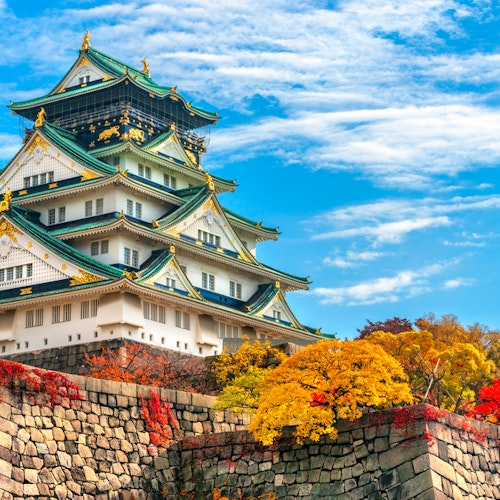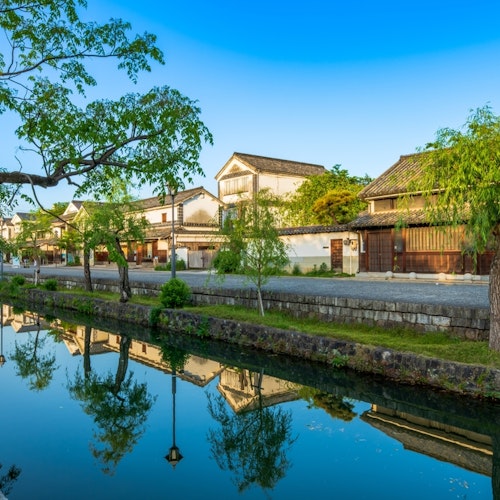
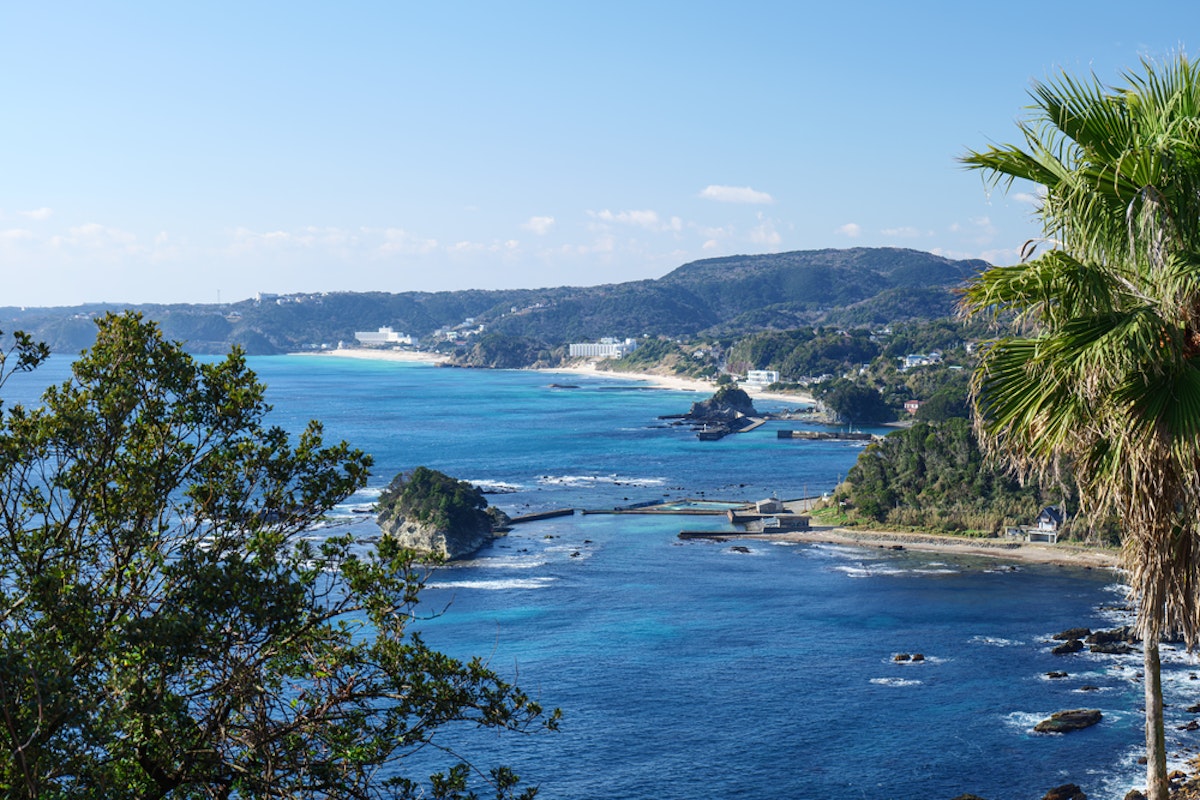
Planning a trip from Tokyo to Izu? Great choice! Whether you are craving beaches, hot springs, scenic drives, or just a peaceful escape from city life, the Izu Peninsula is one of the most convenient and beautiful getaways from Tokyo.
This guide will walk you through the best ways to get from Tokyo to Izu, what to expect along the way, and all the wonderful things to do once you get there.
While Tokyo buzzes with neon lights and crowded streets, Izu offers calm beaches, lush mountains, and soothing onsen (hot springs). It’s close enough for a weekend trip but feels like a world away. You’ll find rugged coastlines, quaint towns, and some of the freshest seafood in Japan. Plus, it’s got history, culture, and outdoor activities that make it perfect for solo travelers, couples, or families.
The peninsula is known for its natural beauty, like the Jogasaki Coast’s dramatic cliffs and Shirahama Beach’s white sands. It’s also a hotspot for onsen lovers, with towns like Atami and Shuzenji offering steamy baths to melt your stress away. Whether you’re into hiking, surfing, or just soaking in a hot spring with a mountain view, Izu delivers.
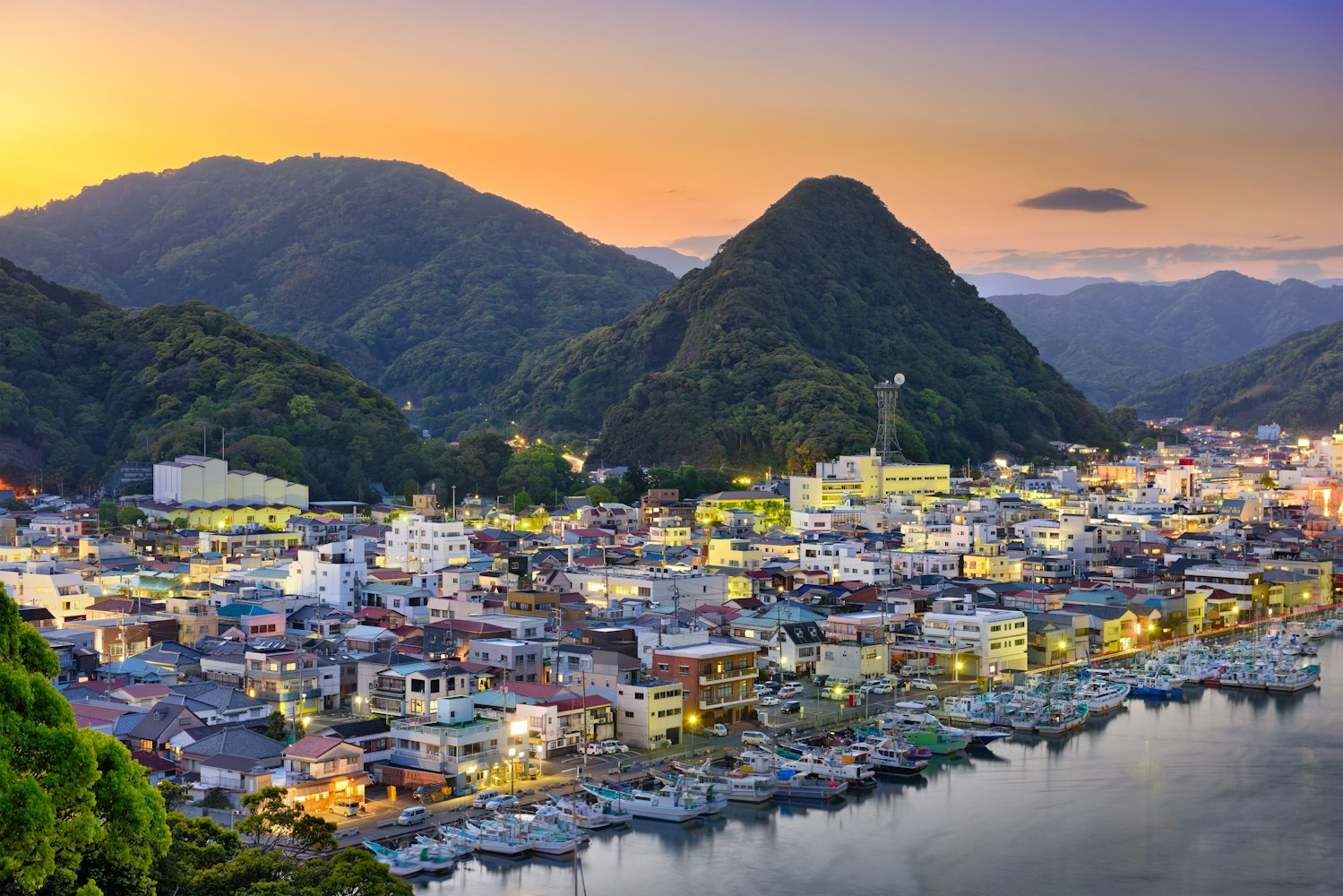
That depends on where in Izu you are heading. The peninsula is fairly big, and its towns are spread out. Atami is the gateway to the Izu Peninsula and is only about 100 kilometers from Tokyo. It takes around 40 to 50 minutes by bullet train. Other towns like Shimoda or Kawazu, which are further south, can take up to 3 hours depending on how you travel.
There are several ways to get to Izu from Tokyo, and each has its own benefits depending on your time, budget, and travel style.
Trains are the go-to for most travelers heading to Izu. The fastest option is the Shinkansen (bullet train) from Tokyo Station to Atami, a major gateway to Izu. The ride takes about 45 minutes on the Tokaido Shinkansen, and tickets cost around 4,000 to 6,000 yen one way, depending on the season and whether you reserve a seat. From Atami, you can hop on a local train, like the Ito Line or Izu Kyuko Line, to reach other parts of the peninsula, such as Ito or Shimoda.
For a cheaper option, take the regular JR Tokaido Line from Tokyo or Shinjuku Station to Atami. It takes about 90 minutes and costs around 2,000 yen. If you’re going farther, like to Shimoda, you’ll transfer to the Izu Kyuko Line, and the whole trip might take around 2.5 to 3 hours.
For a scenic vibe, try the Odoriko or Super View Odoriko trains. These limited express trains run from Tokyo to Izu, offering big windows for soaking in the coastal views. They’re a bit pricier (around 5,000 to 7,000 yen), but the experience is worth it if you love a good view.

Discover Japan without limits with our all-access JR Pass!
If you’re pinching pennies, buses are a solid choice. Overnight buses run from Tokyo (usually Shinjuku or Shibuya) to various spots in Izu, like Shimoda or Shuzenji. The trip takes about 3 to 4 hours, and tickets cost around 2,500 to 4,000 yen.
Companies like JR Bus Kanto and Tokai Bus operate these routes, and you can book online or at bus terminals. The downside? It’s not as comfy as a train, and you might miss out on daytime views.
Renting a car gives you the most flexibility to explore Izu’s nooks and crannies. From Tokyo, it’s about a 2 to 3-hour drive to Atami or Ito, depending on traffic. Take the Tomei Expressway to Numazu, then head south along Route 414 or coastal roads.
Rental cars start at around 6,000 yen per day, plus tolls and gas. Parking is easy in Izu, especially in smaller towns, but be ready for narrow roads in rural areas. Driving lets you stop at random beaches or viewpoints, which is a big plus if you love spontaneity.
Once you’re in Izu, the peninsula is your playground. From soaking in hot springs to hiking volcanic trails, there’s something for everyone. Here’s a rundown of the best activities to make your trip unforgettable.

Izu is an onsen paradise. Towns like Atami, Shuzenji, and Ito are dotted with hot spring baths, many with views of mountains or the ocean. Shuzenji, often called “Little Kyoto,” is a gem for traditional onsen experiences.
Check out Hakoyu, a public bath with a serene vibe, or stay at a ryokan (traditional inn) for a private onsen experience. Atami’s seaside onsen resorts are perfect for watching the sunset while you soak. Most ryokans offer day passes if you’re not staying overnight, with prices ranging from 500 to 2,000 yen.
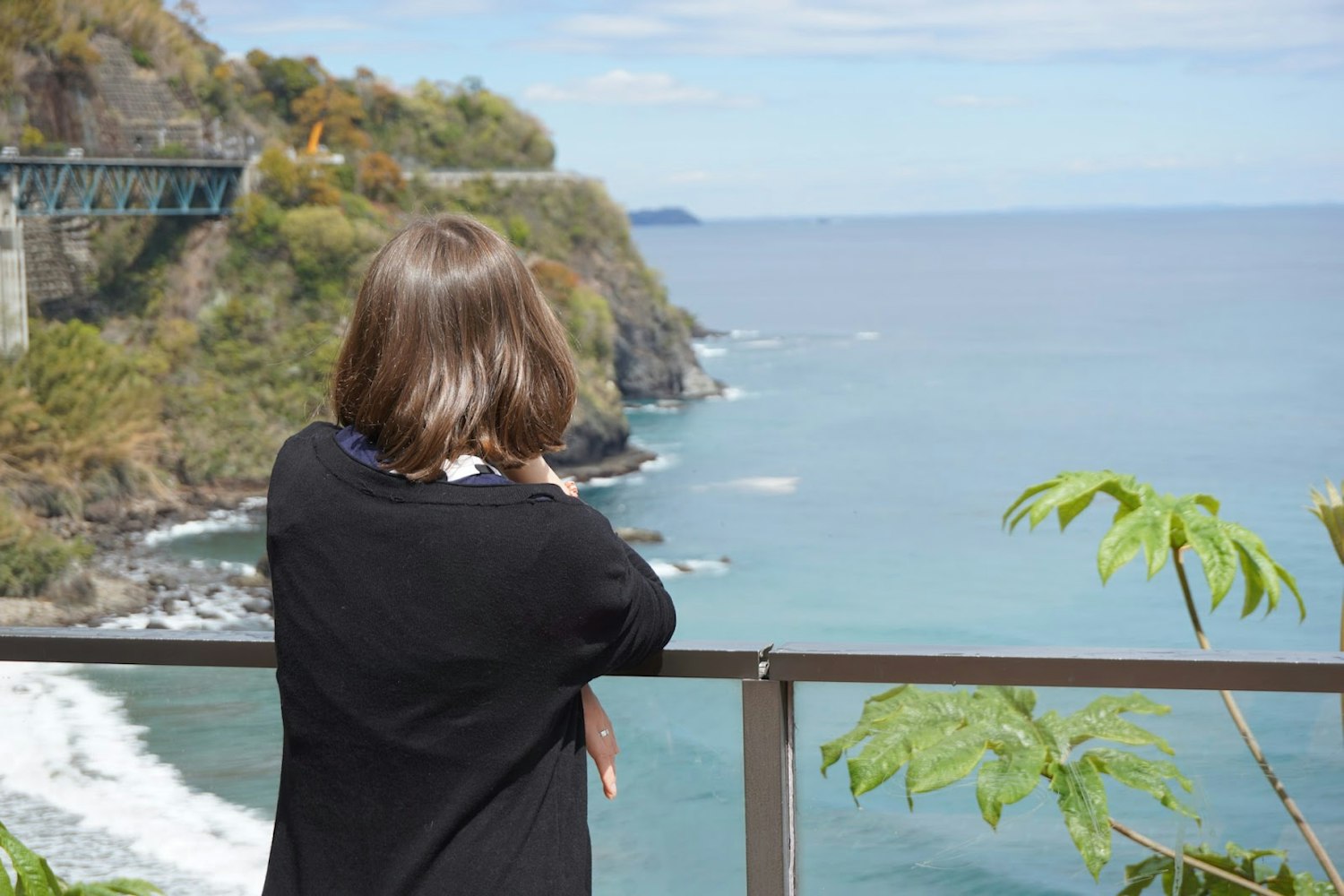
The Jogasaki Coast, near Ito, is a must for nature lovers. This rugged stretch of coastline was formed by lava from Mount Omuro, and it’s got dramatic cliffs, crashing waves, and a cool suspension bridge called Kadowaki-no-Tsuribashi.
The hiking trail along the coast is about 10 kilometers long and takes you past lighthouses and rock formations. It’s an easy walk, but wear comfy shoes and bring water. The views are Instagram-worthy, especially at sunrise or sunset.
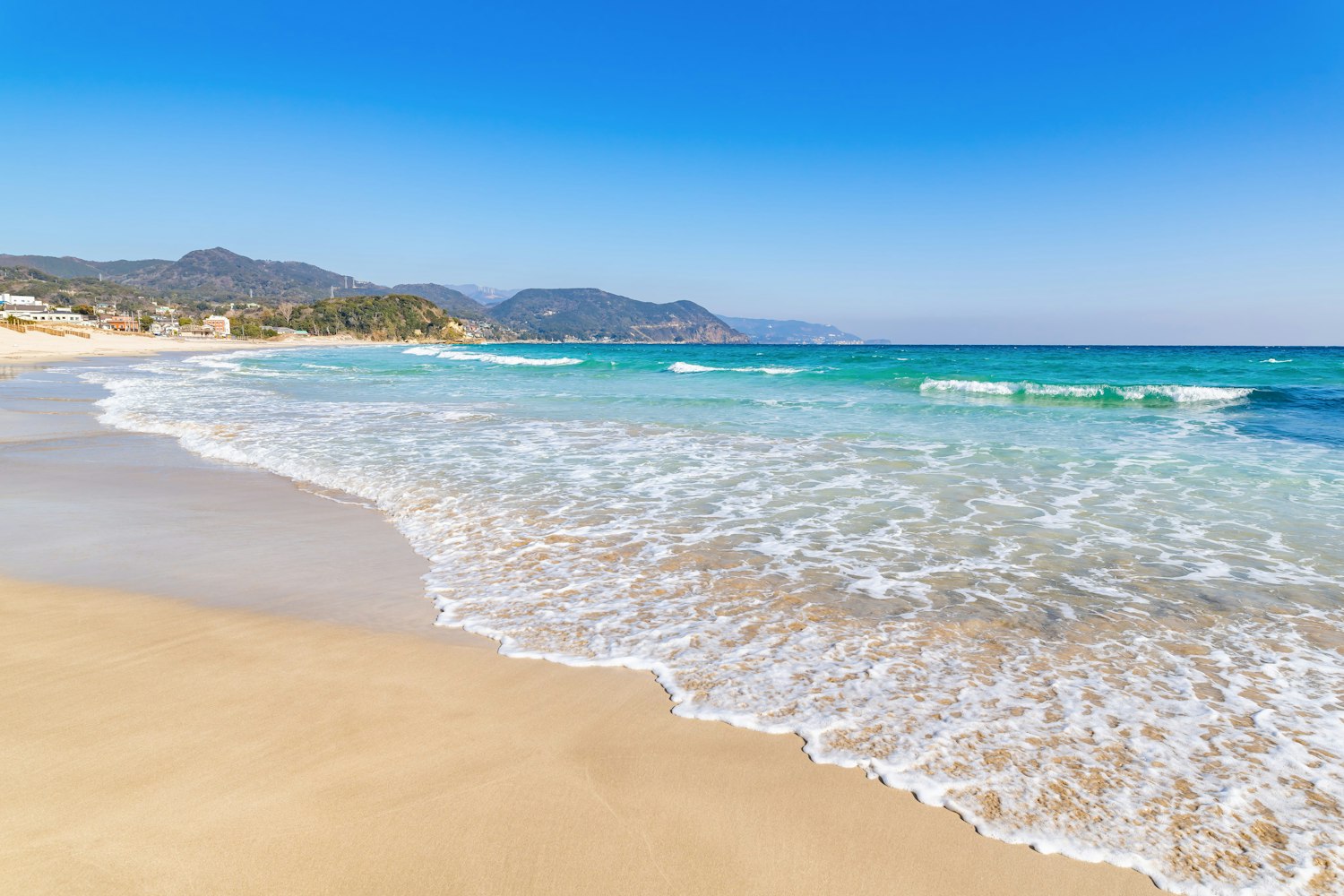
If you’re dreaming of sand and surf, Shirahama Beach in Shimoda is one of Izu’s best. Its white sand and clear water make it a hotspot for swimming, surfing, and chilling. The beach is family-friendly, with shallow areas for kids, and there are surf shops nearby if you want to catch some waves. Summer is peak season, so arrive early to snag a good spot. Nearby cafes serve up fresh seafood and shaved ice to keep you fueled.
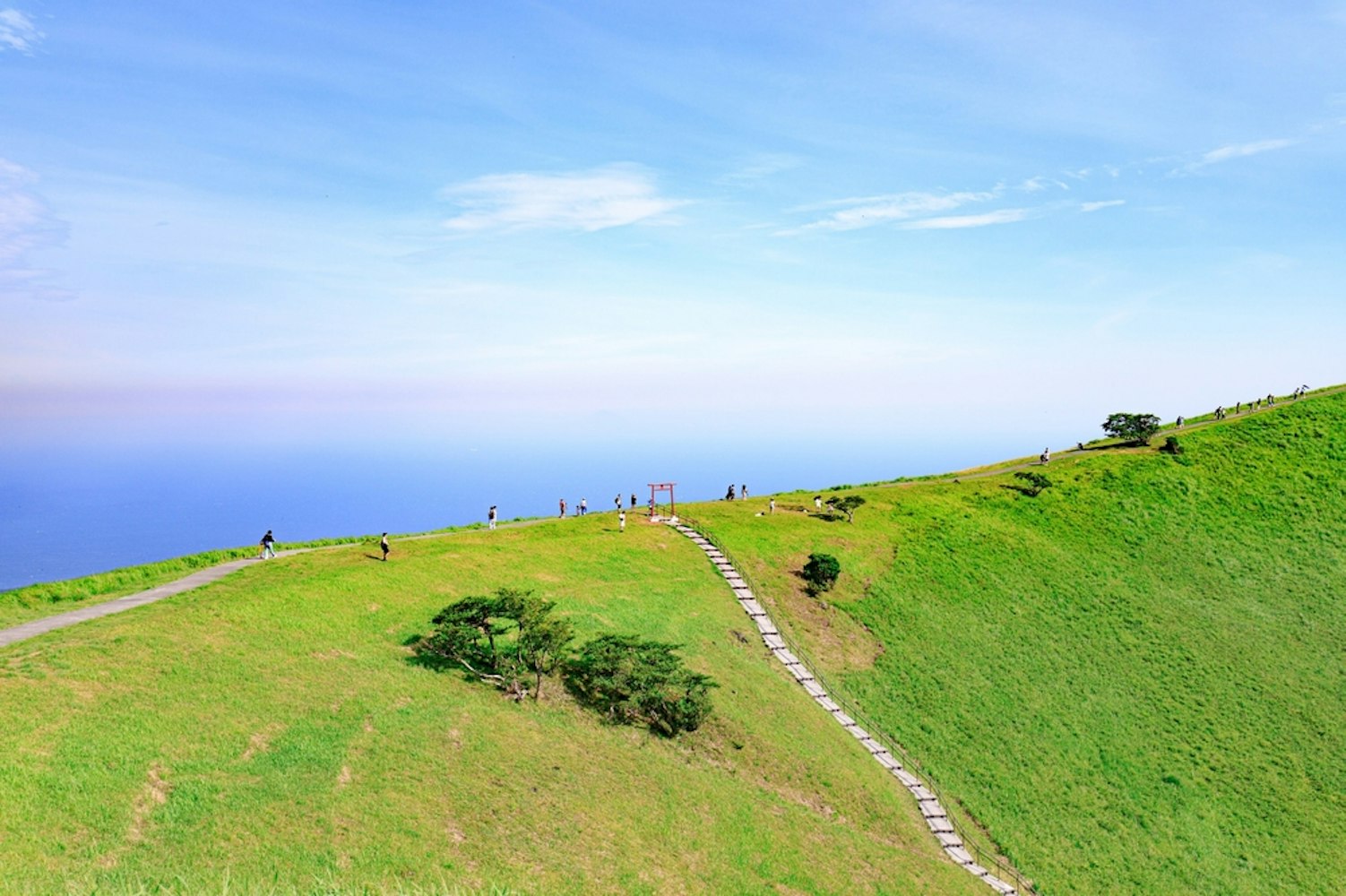
For a dose of adventure, hike Mount Omuro, a dormant volcano near Ito. The mountain’s perfect bowl shape makes it a standout, and the 20-minute climb to the top rewards you with 360-degree views of Izu and even Mount Fuji on clear days.
At the summit, you can walk around the crater or try archery for a quirky twist. The chairlift to the base is handy if you want to save some energy. Entry to the chairlift and hiking area costs about 1,500 yen.
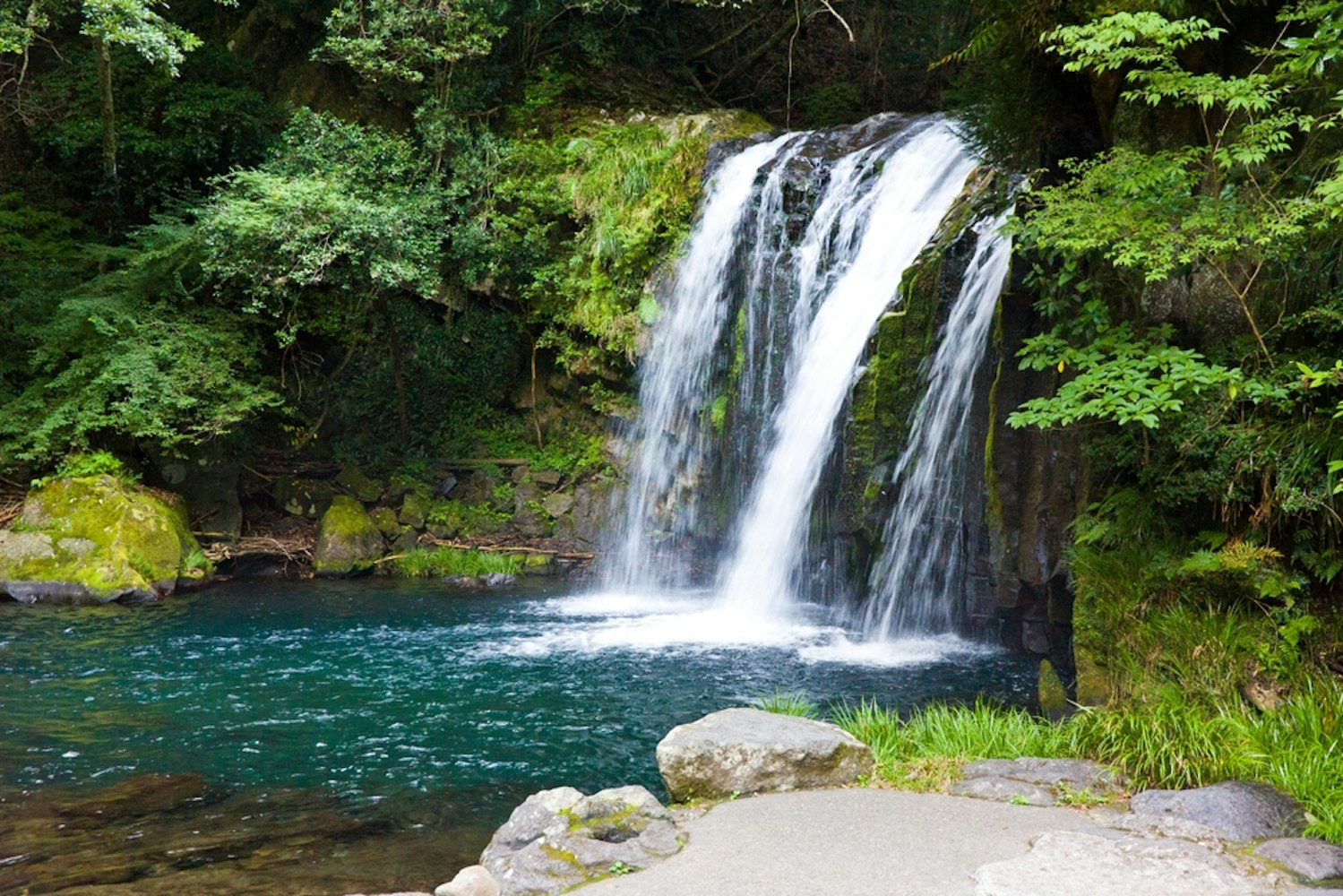
Kawazu, a small town in Izu, is home to the Seven Waterfalls, a series of cascades tucked into a lush forest. The trail to see all seven is about 1 kilometer and takes around an hour to walk. The biggest waterfall, Odaru, is a stunner at 30 meters tall.
Along the way, you’ll pass bamboo groves and statues inspired by a famous Japanese novel, “Izu no Odoriko.” It’s a peaceful spot for a morning stroll, and there are small cafes nearby for a quick coffee or matcha break.
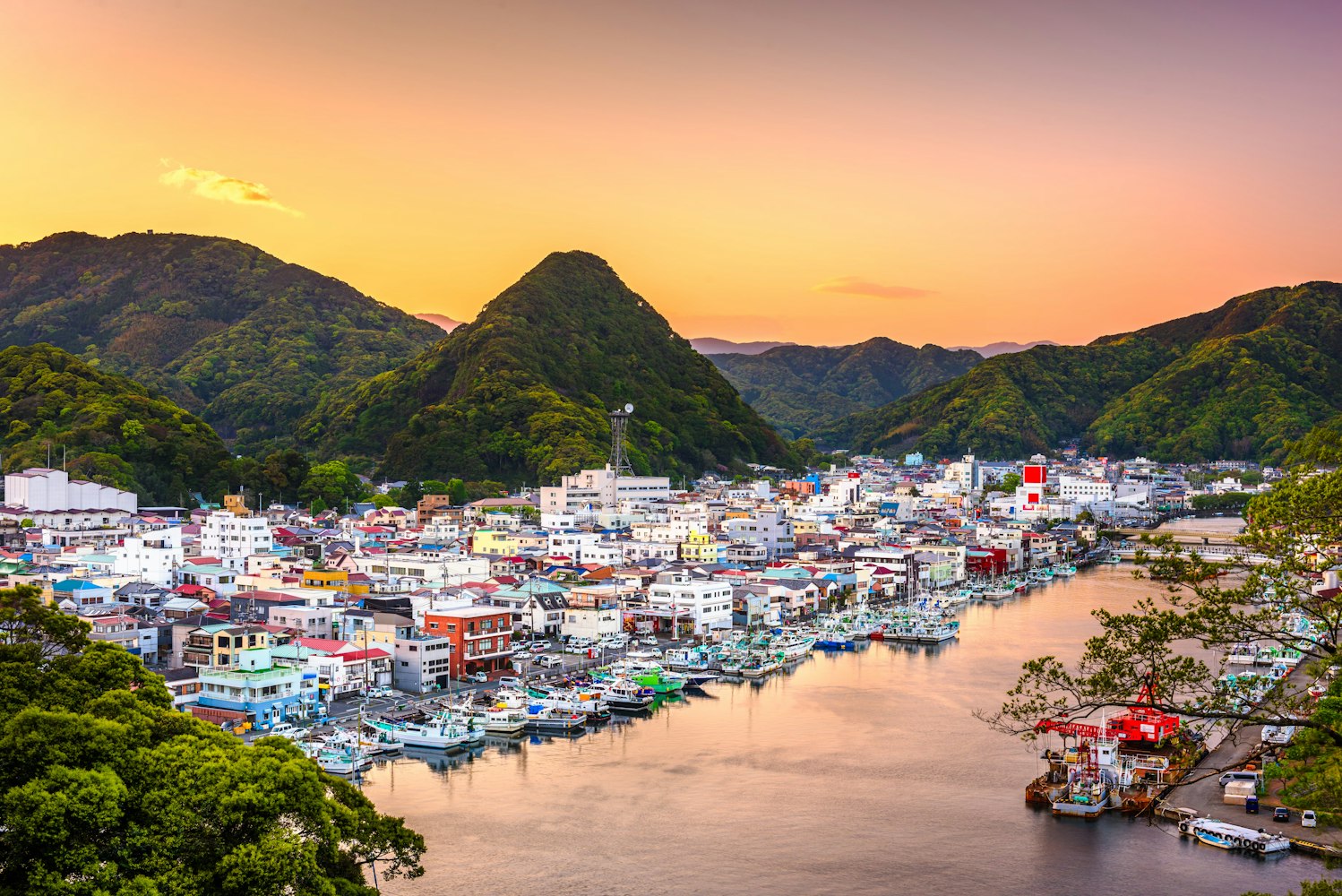
Shimoda, at Izu’s southern tip, is steeped in history. It’s where Commodore Perry landed in 1854, opening Japan to the world. Visit Ryosenji Temple, where the first U.S.-Japan treaty was signed, or stroll through Perry Road, a charming street lined with old buildings and cafes.
Shimoda also has a small aquarium and a cable car to Mount Nesugata, offering killer views of the harbor. If you’re a history buff, this town’s got plenty to keep you curious.
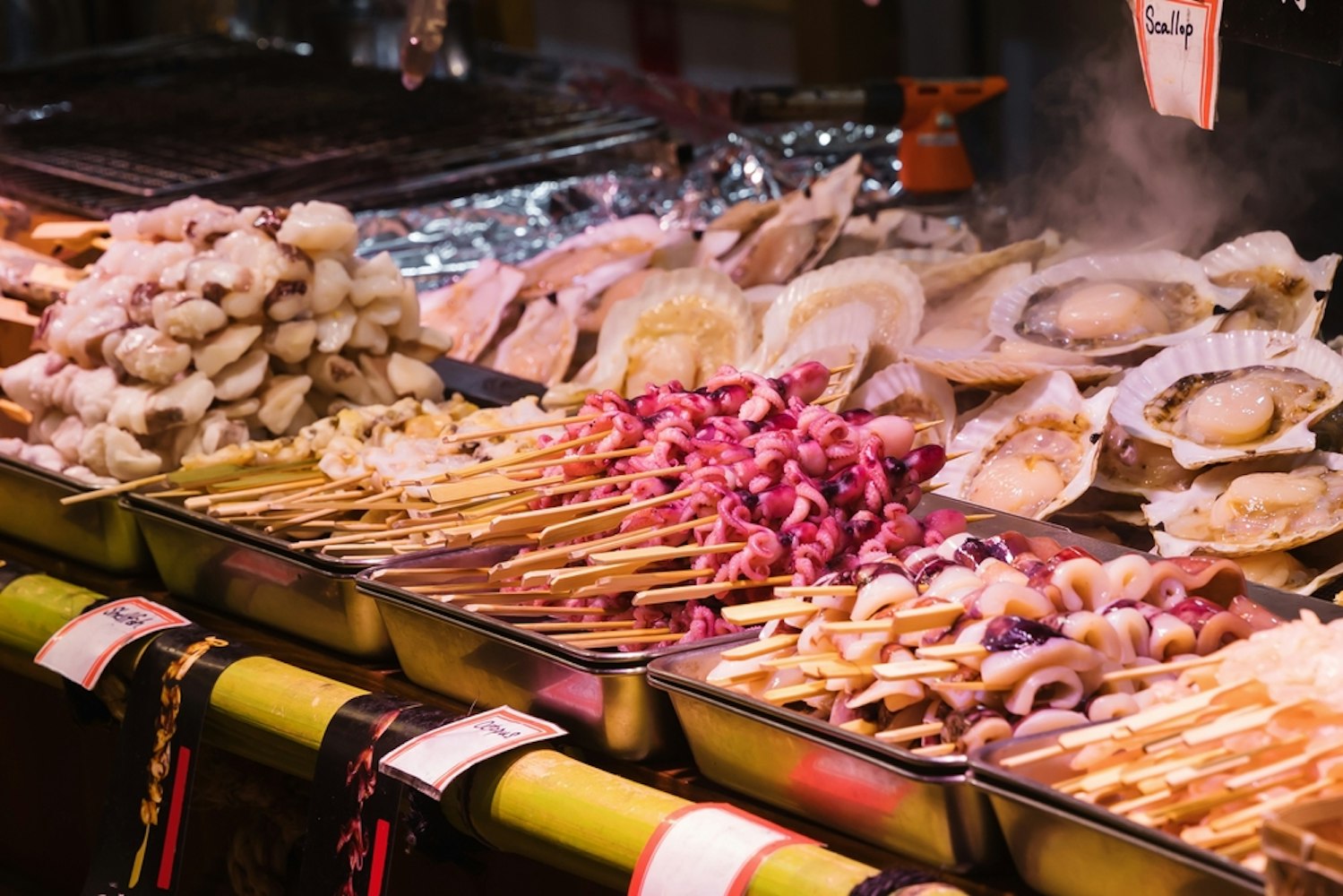
Izu’s coastal location means seafood is a highlight. From sushi to grilled fish, the peninsula’s restaurants serve up dishes so fresh they practically swim to your plate. In Ito or Shimoda, try kaisendon, a rice bowl topped with raw fish like tuna, shrimp, and sea urchin.
Local specialties include kinmedai (golden eye snapper) and sazae (turban shell). Head to a local izakaya or fish market for the full experience. Prices vary, but a good seafood meal can cost 1,500 to 3,000 yen.
Izu has lodging for every vibe, from budget hostels to luxe ryokans. Atami and Ito are great for beachside hotels or onsen resorts. Shuzenji is ideal for a traditional Japanese stay, with ryokans offering tatami rooms and kaiseki (multi-course) dinners.
Shimoda has guesthouses and minshuku (family-run inns) for a cozy, local feel. Booking in advance is smart, especially in summer or during cherry blossom season in spring. Expect to pay 5,000 to 10,000 yen per night for budget options or 15,000 to 30,000 yen for a ryokan with meals included.
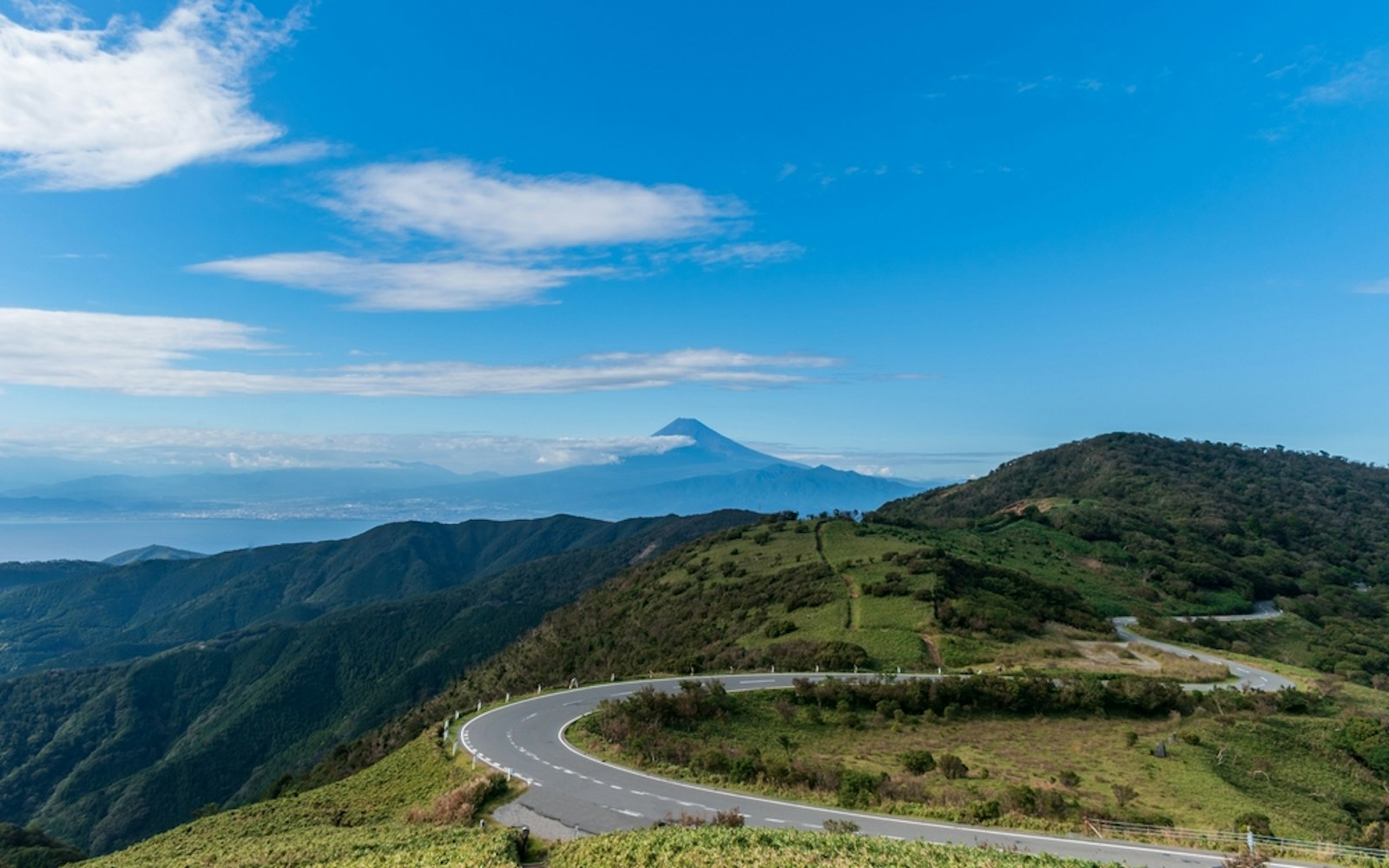
Izu shines year-round, but each season has its perks. Spring (March to May) brings cherry blossoms, especially in Kawazu, where the early-blooming sakura draw crowds. Summer (June to August) is beach season, perfect for swimming and festivals, though it can get humid.
Fall (September to November) offers cool weather and vibrant foliage, ideal for hiking. Winter (December to February) is quieter, with fewer tourists and cozy onsen vibes. If you want to avoid crowds, aim for late fall or early winter.
A solid Izu trip depends on how much time you have. For a weekend, focus on one or two areas, like Atami and Ito or Shimoda and Kawazu. Day one could be soaking in an onsen and exploring a town, while day two might be a coastal hike or beach day. If you have three or more days, add Mount Omuro or the Seven Waterfalls to your list. Renting a car makes it easier to hop between spots, but trains and buses work fine if you stick to major towns.
Pack light but bring layers, as Izu’s weather can change fast, especially near the coast. A good pair of walking shoes is a must for hiking or exploring. If you’re visiting onsen, bring a small towel, though most places provide them. Lastly, brush up on basic Japanese phrases like “arigatou” (thank you) and “sumimasen” (excuse me) to make your trip smoother.
Izu’s mix of nature, culture, and relaxation makes it an ideal escape from Tokyo’s hustle. It’s close, affordable, and packed with things to do, whether you’re into adventure or just want to unwind. The peninsula’s small towns and friendly locals add a personal touch you won’t find in bigger cities. Plus, the chance to soak in an onsen, hike a volcano, or eat fresh sushi by the sea is hard to beat.
So, grab your bag, pick your transport, and head to Izu. Whether it’s a quick weekend trip or a longer adventure, this peninsula will leave you refreshed and ready to plan your next visit.

